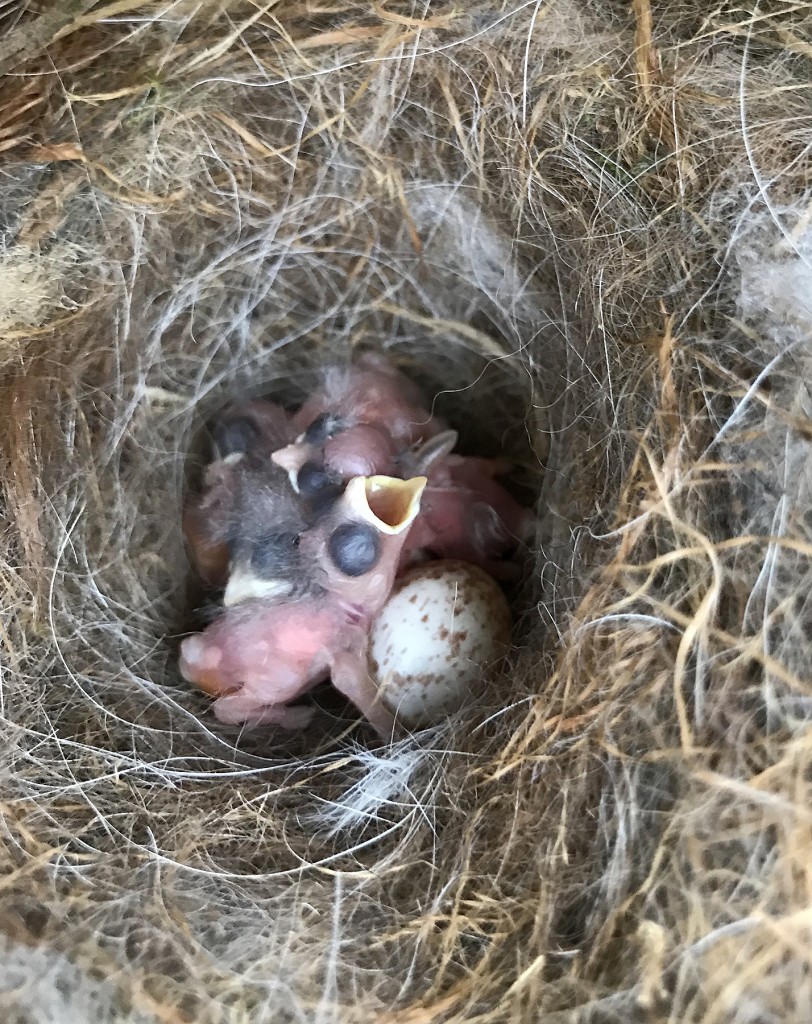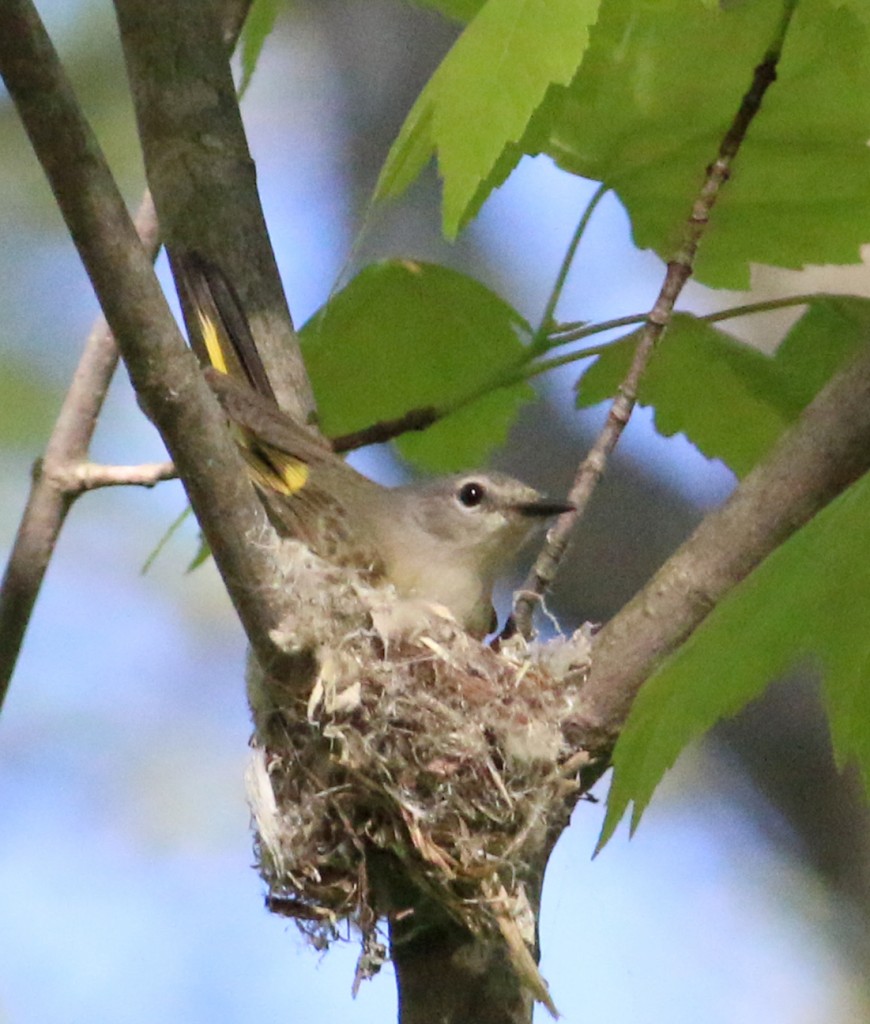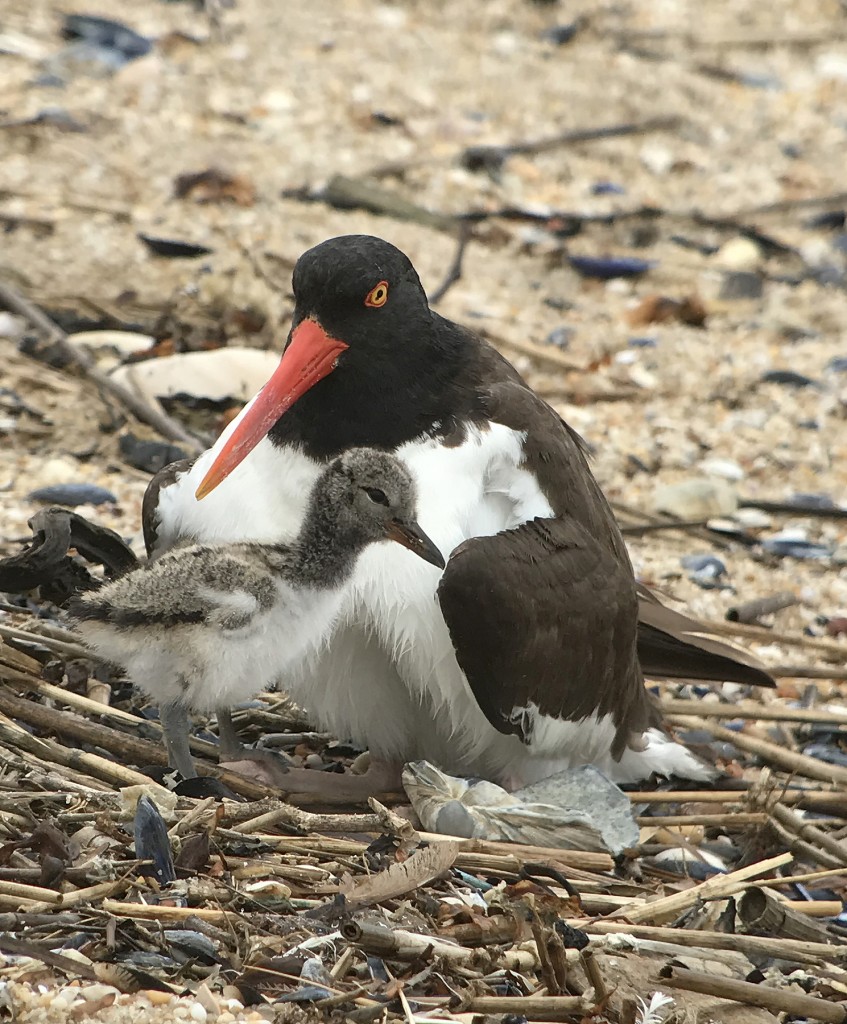It’s that time of year when most spring migrants have moved through my home area of New Jersey and the local birds start breeding. This is a great time to switch our emphasis away from finding and identifying migrants, and instead moving on to observing behaviors. The birds are at different stages of their breeding cycles now, with some species just beginning to attract mates and set up territories, while others are building nests and laying eggs, and still others are already taking care of their offspring. I’ve enjoyed seeing evidence of all these stages with different species during the past week.
First, I’ve been monitoring our local bluebird box trail and am happy to see eggs and chicks in the boxes. And happily their survival is much better than last year when we had a wet and cold spell during spring. In our boxes we have Eastern Bluebirds, Carolina Chickadees, House Wrens, and Tree Swallows all nesting. In other words, a nice diverse collection.
Second, during our second annual High Point cabin rental, Jeanine and I and brother Rich watched the upland breeding birds in nest-making activity, where I was able to find my first two Ovenbird nests (with eggs in both), my first Yellow-bellied Sapsucker nesting cavity (they don’t nest in southern NJ), along with a Baltimore Oriole collecting nesting material, and a family of Common Mergansers that surprised us on a small stream. All good.
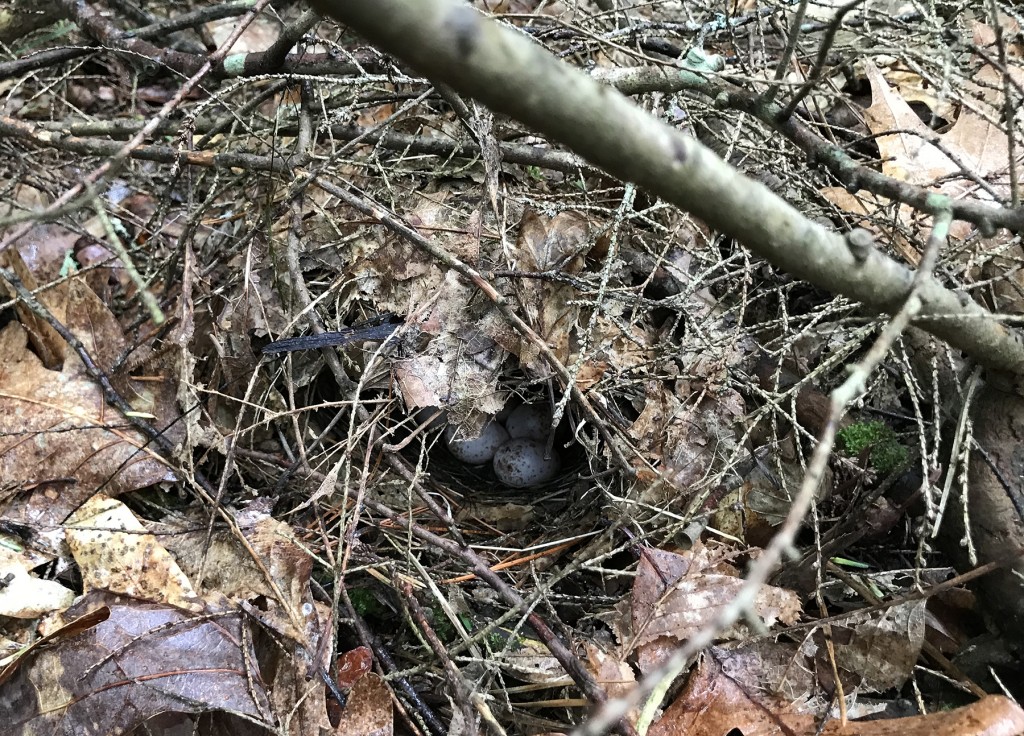
One of the two Ovenbird nests found on our High Point trip. Three eggs can be seen inside its ‘oven’, which is nearly impossible to find in the leaf litter.
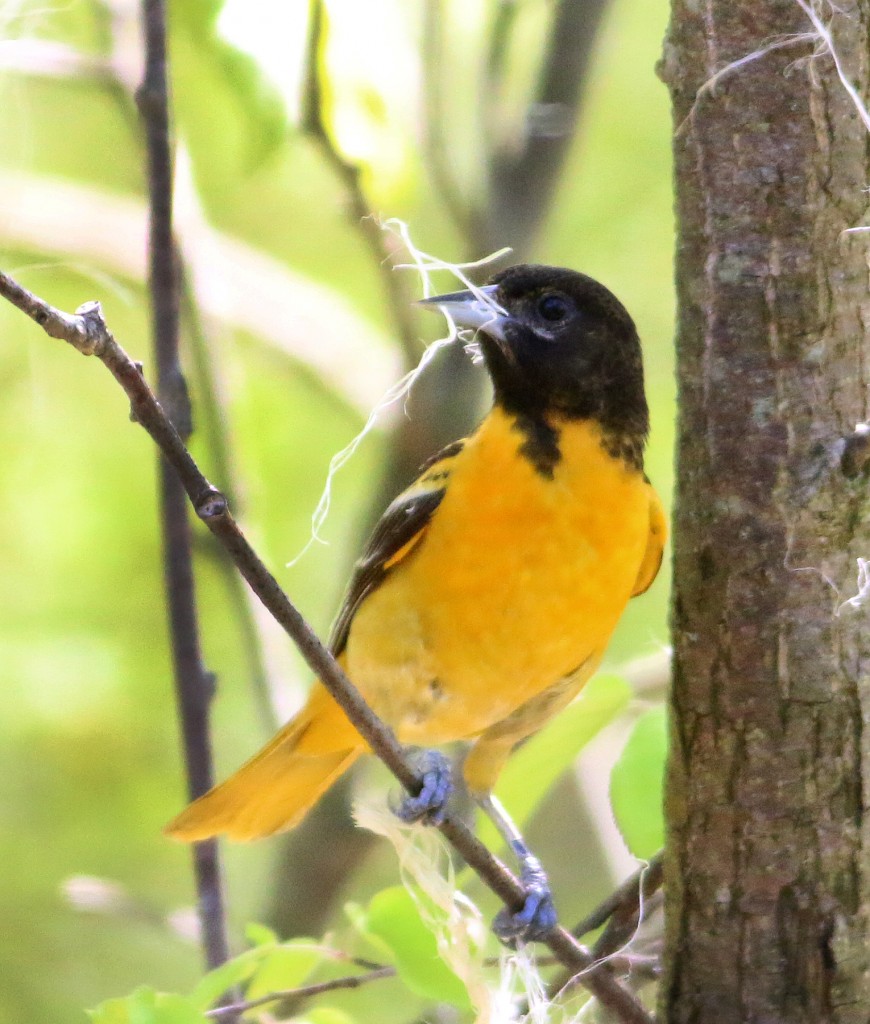
A Baltimore Oriole entertained us by gathering nesting material for two days just outside our cabin.
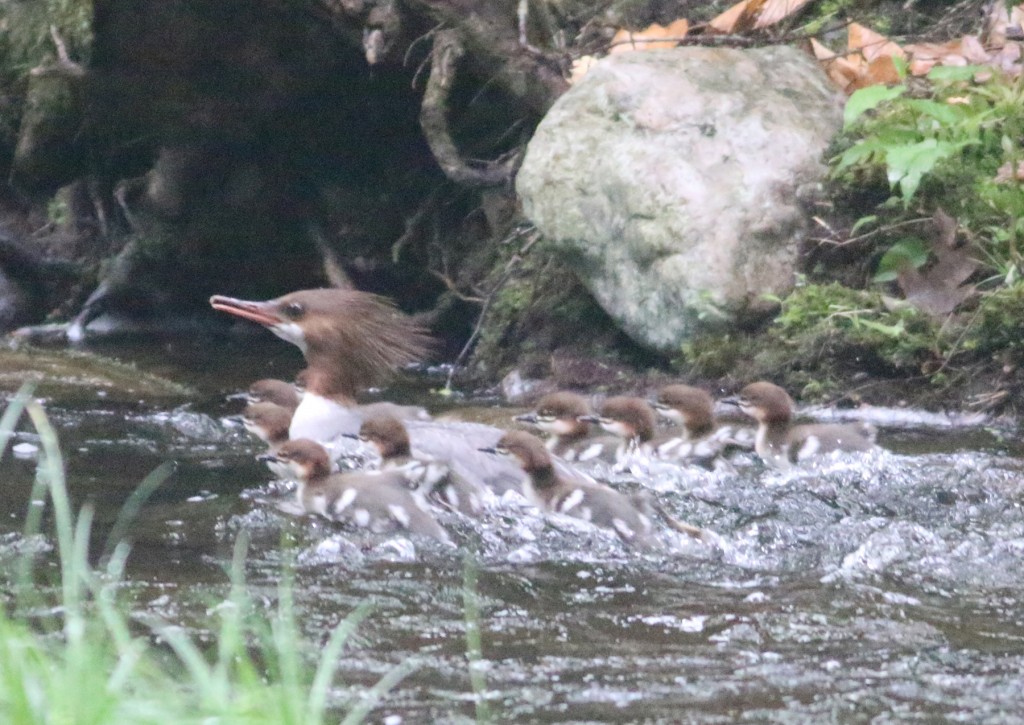
A family of Common Mergansers surprised Jeanine and I as we walked beside a small stream in Stokes State Forest.
Finally, at a coastal stop today my friend Chris and I were fortunate to watch American Oystercatcher parents leading their youngsters away from protective cover, into the open beach.
Shortly afterward, we were treated to a courtship ‘dance’ between two Least Terns that lasted a few minutes before he fed his mate and continued on to the next step. Twice. Their extended side-by-side head movements were a pleasure to watch, and I wish I was able to capture more of that ‘dance’.
Click here to watch a video of the terns: Romantic Least Terns
It’s a great idea to continue developing your identification skills, but at this time of year keep an eye out for breeding birds near you and enjoy their behaviors.
